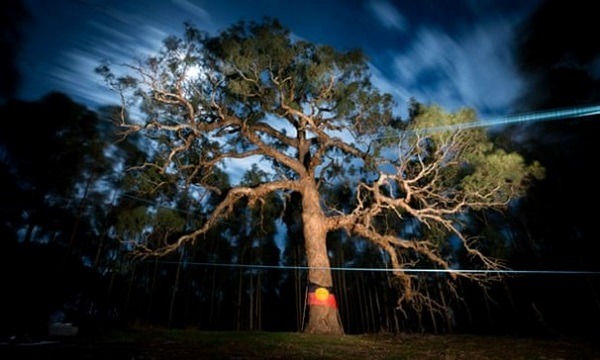The Victorian government has moved ahead with contentious plans to cut down an ancient yellow box tree with cultural significance to Australia’s Indigenous Djab Wurrung women.
Felled to make way for a new highway in the state’s west, the tree’s fate yesterday left protesters shattered, with 50 people arrested in the process.
One observer, a legal student who chose to remain anonymous, told The Guardian that police had turned up and immediately turned violent, including “grabbing people by the head”.
“They starting making really violent arrests, grabbing people by the head; four cops on top of one person,” she said.
“They then came up to me and told me I would be arrested if I didn’t move on. I agreed to move on. They then arrested me immediately despite my compliance. They walked me out, away from my position as a legal observer, holding both of my arms.”
All protesters who were arrested received bail to appear in the Ararat Magistrates Court at a later date.
Recognised as a Directions Tree, the yellow box is a sacred place where many Djab Wurrung women have journeyed to give birth throughout history.
“It has placenta buried with the seed, from ancestors,” a member of the Djab Wurrung embassy, Zellanach Djab Mara told The ABC.
Despite red-hot tensions, and grief-stricken statements from Indigenous community leaders, the Victorian government claims that they had numerous consultations with the Djab Wurrung people, and determined that the tree in question was not of particular cultural significance.
Jacinta Allan, Victoria’s Minister for Transport Infrastructure, claimed in a statement that no trees had been, or would be, removed as a part of the Western Highway upgrade without the consent of the the 12 families that make up the Djab Wurrung people.
“The tree that was identified in media reports on Tuesday, usually referred to as the “Fiddleback Tree”, has been involved in multiple cultural surveys involving Djab Wurrung elders and has not been assessed as being culturally significant,” she said.
“In fact, the tree has been assessed by an arborist as being “maybe over 100 years old” and is highly unlikely to pre-date European settlement.
The Directions Tree that was identified in the Federal Court proceeding is at the northern end of the alignment almost 10 kilometres away.
It has not, and will not be removed.
After consulting with Eastern Maar, the Government changed the alignment more than a year ago to avoid more trees, including two suspected birthing trees.
The Ombudsman had a good look at this and found that Major Road Projects Victoria has acted respectfully and appropriately.”
But Victoria’s first Indigenous senator, Lidia Thorpe, who was only weeks ago sworn in, said the actions of the government had undone the possibility of good faith and compromise.
“We wanted a peaceful outcome, we came with peace and in good faith, and were willing to negotiate.
“But heavy-handed politics from the Andrews government has faded any hopes of that, or anything else into the future.
“The inherent violence of the system is being perpetrated against us on every level.”
Image Credit: Sean Paris.


